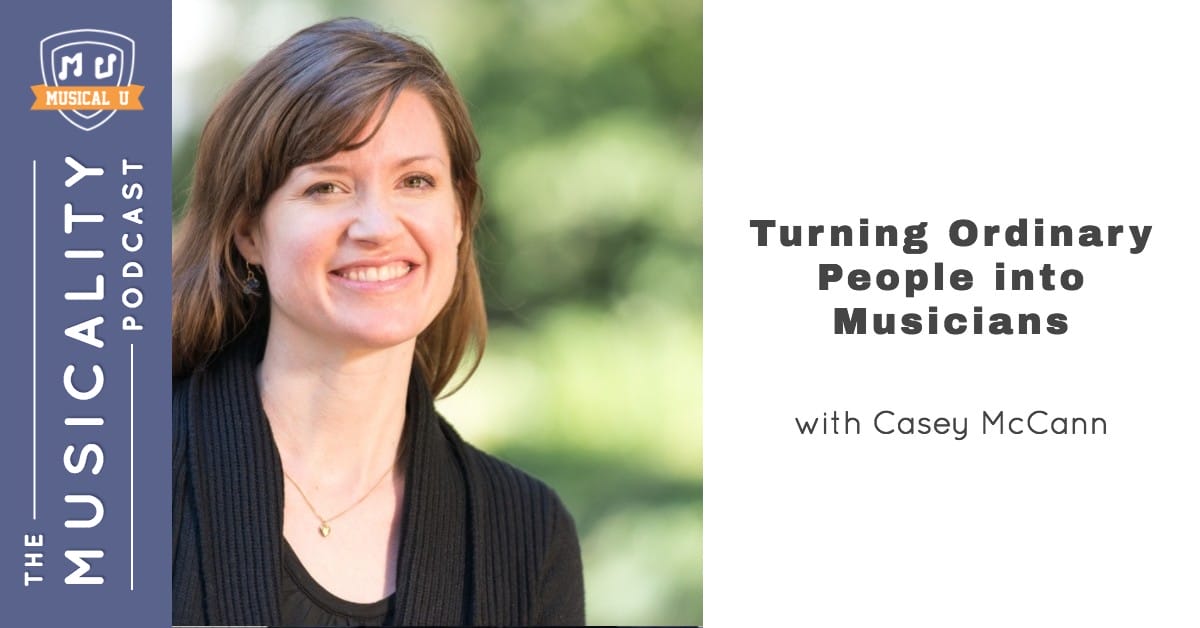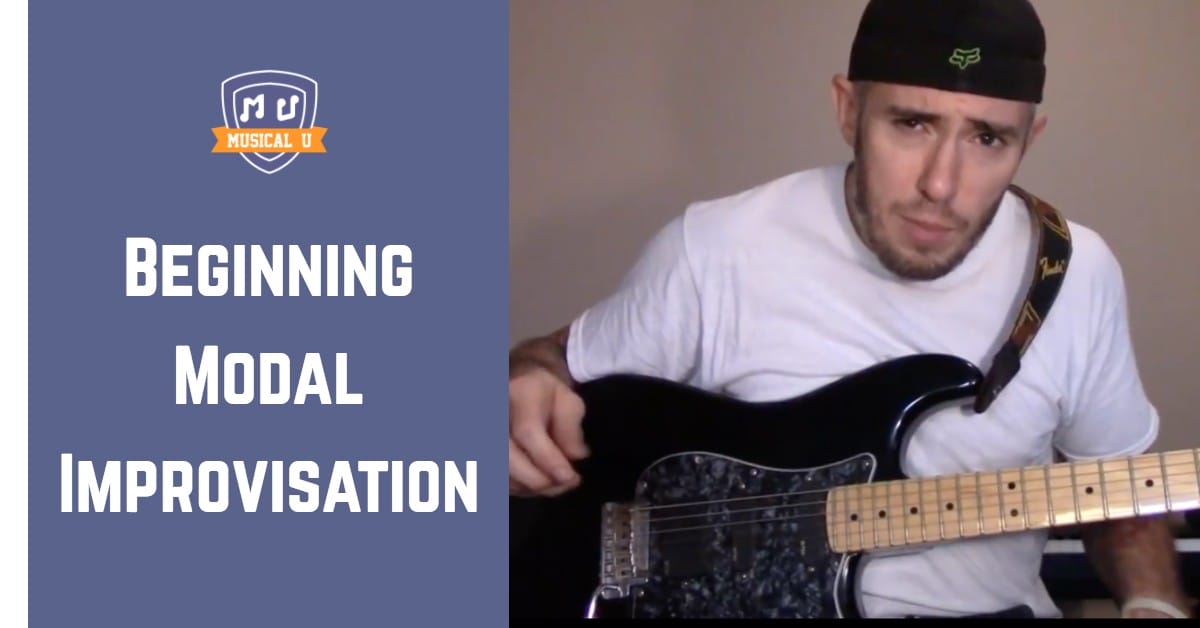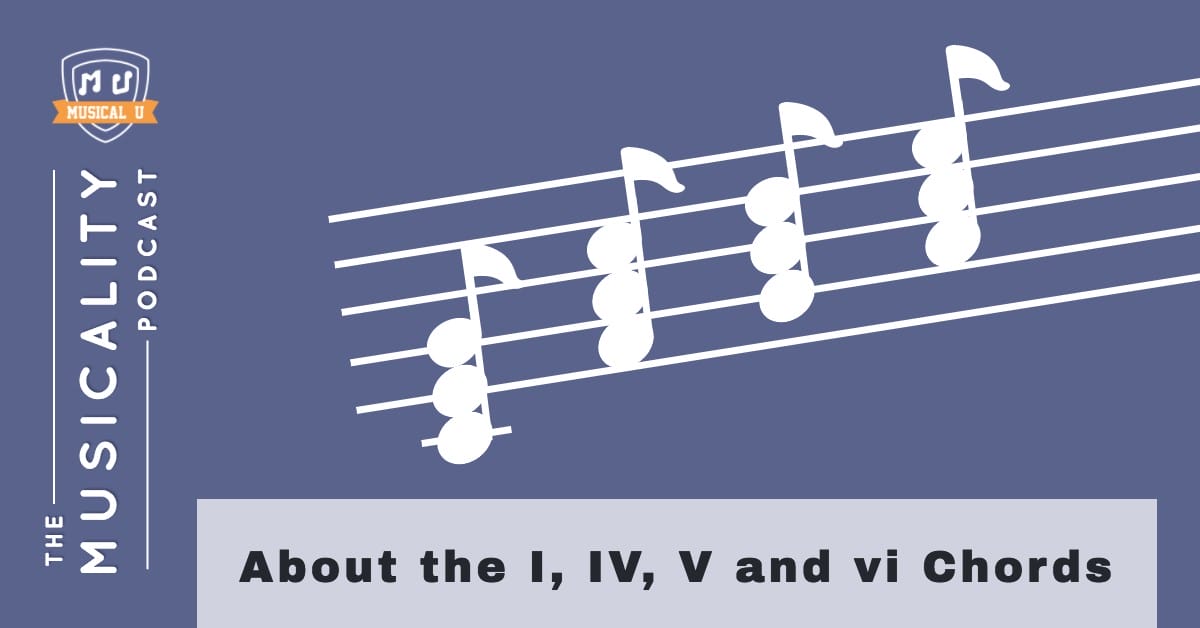2018 is almost upon us, and with the new year come new musical goals to chase.
We’re here to help you get a head start. We think the last week of the year deserves some special posts, something a little extra to shine a light on the possibilities that open up when you think (and play) outside the box of your regular music practice.
In that spirit, we bring you the following:
- A music teacher that doesn’t limit her students to one instrument only, but encourages them to try out and switch between multiple in order to build their musicality
- A way of improvisation that goes beyond just major and minor keys, venturing into the exciting waters of modal playing
- And lastly, one of the most famous and oft-used major chord progressions in modern music with an extra minor chord thrown in there for interest and a little bit of extra learning
Making A Musician
How do you empower a just-beginning music student and give them the tools they need to succeed early in their music education?
By helping them develop their musicality, something that will aid them with everything from hitting the right notes to playing expressively to being able to recognize chords.
Nobody knows this better than Casey McCann, who founded Eclectic Music and The Little Middle School with the aim of promoting each musician’s personal growth and teaching these core skills right from the get-go.
 In Turning Ordinary People into Musicians, with Casey McCann, she takes us through her beginnings in music, her unique way of teaching musicality at Eclectic Music and The Little Middle School, and her take on the hot-topic debate of talent vs. training. She even shares an incredible anecdote about how she dazzled a room full of musicians with her ability to play by ear, back when she did not yet know how to read music!
In Turning Ordinary People into Musicians, with Casey McCann, she takes us through her beginnings in music, her unique way of teaching musicality at Eclectic Music and The Little Middle School, and her take on the hot-topic debate of talent vs. training. She even shares an incredible anecdote about how she dazzled a room full of musicians with her ability to play by ear, back when she did not yet know how to read music!
We were delighted that Casey was able to share her amazing story on the Musicality Podcast. She discussed how a great deal of her learning occurred before she was ever able to read sheet music. When she finally had to learn to read the music, it was a matter of translating the theory and musical knowledge that she had into the written music. Whether you are just getting started or are already seasoned at playing by ear, Best Piano Method can show you how to play any song on piano without needing the sheet music.
When she finally started to learn the theory behind the songs that she had been learning, it all fell into place for Casey. At Musical U, we have heard the same from many of our students, who knew how to place songs but were unaware of how the theory worked. Hear and Play recently explored this topic, and made some fascinating observations about how popular chord progressions work and why they are so attractive to our musical ears.
When Chords “Click”
As a guitar player, Casey quickly learned about chord shapes and how she could play songs just by remembering what shape to form. This was usually without any regard to what notes were actually in the chord, but with respect to the muscle memory of the shape itself. This is a great way to get the notes under your fingers and enjoy playing while learning the art of your instrument!
There are many different instruments that this same type of thought can be applied to. Ukulele Mag talks about three movable chord shapes that will unlock millions of songs in your fingers, for a quick-start that will take you to beach-pickin’ happiness in only a few minutes!
In our modern era, there are so many interactive tools that can show you the chord shapes that you need to remember. 8 Notes’ tool shows you numerous common inversions that will increase your ability to move freely about the piano keyboard.
Finally, some instruments, like the guitar, lend themselves to interesting sounds through the natural structure of the instrument. In this case, the ability to add an open string to a chord shape can completely change the character of the chord that you are playing. FretJam has compiled the best chord shapes for creating a dark, tense, and dramatic song.
Beginning Modal Improv
Modal improvisation tends to put many musicians off because of its associations with extremely complicated jazz guitar.
Though it’s true that modal solos can get mind-blowingly intricate, all you need in order to understand modes and build unforgettable licks, riffs, and solos out of them is a little bit of chord theory and a good ear.
 In Beginning Modal Improvisation, with Brian Kelly from Zombie Guitar, master guitarist Brian gives an incredible beginners’ guide to playing in modes, discussing the difference between keys and modes, when to use each one, and how to understand modes using music theory you already know. Best of all, he helps you hit the ground running by introducing and demonstrating two modes that you can easily start soloing with right now, even if you don’t know how to read music!
In Beginning Modal Improvisation, with Brian Kelly from Zombie Guitar, master guitarist Brian gives an incredible beginners’ guide to playing in modes, discussing the difference between keys and modes, when to use each one, and how to understand modes using music theory you already know. Best of all, he helps you hit the ground running by introducing and demonstrating two modes that you can easily start soloing with right now, even if you don’t know how to read music!
Hats off to Brian for creating such a practical and easy-to-follow lesson that introduces modal improvisation. Why do modes work, and why can’t we stop talking about them? Fretello explores the fascinating world of modes, and explains why they add depth and colour to your musical creations.
There are so many fascinating musical sounds that can be created using modes. Though many musicians believe that this is a difficult concept that is impossible for them to wrap their heads around, the truth is, once you can understand some of the basic theory, you’ll be on your way to applying modes in your practice. Jazz Guitar Online has compiled a fantastic comprehensive lesson on all the modes.
Learning all the modes and how to play them on your instrument is one thing. When it comes to play in a live setting, how can you know which mode is the best fit for the song? You may have learned that you can play multiple scales over a chord, but this lesson from the Jazz Piano Site delves deeper, going into great detail about how to wisely select a scale to solo with.
Once you have become comfortable using modes, it’s time to put it all together and make your own musical creation. Courtesy of Effective Music Practice, see how one musician combines a Lydian chord progression with improvisation to create a beautiful piece of music.
Four Magic Chords
Most musicians have at one point (whether unconsciously or on purpose) played the famous I-IV-V progression, a staple of blues, rock, pop, folk, and country music.
This week on the Musicality Podcast, we take a peek behind the curtain, answering the questions of just what makes these chords sound so good together, what exactly those numbers mean, and how to take this progression from one key to another.
 To add a little something extra, we’re including the very useful vi (minor) chord in our lesson, a chord second in popularity only to the I, IV, and V. If you want to be able to recognize these chords in action, and even get yourself writing music based around the beautiful progressions built on these chords, look no further than our lesson About the I, IV, V and vi Chords.
To add a little something extra, we’re including the very useful vi (minor) chord in our lesson, a chord second in popularity only to the I, IV, and V. If you want to be able to recognize these chords in action, and even get yourself writing music based around the beautiful progressions built on these chords, look no further than our lesson About the I, IV, V and vi Chords.
At Musical U, we like to stress that being able to hear chord progressions is a very important part of your musicality. One way that you can practice this skill is through ear training quizzes. EW Guitar Lessons’ educational quiz will help you internalize the relationship between the I-IV-V chords in a progression.
This episode of the Musicality Podcast talked about the Nashville Numbering System for chords, and how it is slightly different than using Roman numerals. While neither system is “the right way”, it’s important to understand that different musicians use different musical languages to essentially say the same thing. Singer-songwriter Kate Rockey explains how the Nashville System greatly improved her ability to recognize chords.
Why do songwriters need to know and understand chord progressions? Because it’s no secret that some of the most popular songs of all time tend to have a similar structure! Learning how to use the power of chord progressions can give your songwriting a boost and help you to understand which tones will work best in your songs. American Songwriter explains how to build unforgettable chord progressions in your songwriting.
While we all know that some of the most famous songs of all time have been written using this basic chord structure, it is so refreshing to hear new sounds as well. Rick Beato is no stranger to pushing musical boundaries, and he shares four simple yet effective chord extensions you can use to add interest to your music. You won’t want to miss the amazing sounds he creates!
Pushing the Boundaries of Your Practice
You can see how something as simple as adding one more chord to a standard progression, soloing outside the confines of major and minor, or teaching yourself musicality using an unconventional yet effective technique can bring new interest and dimensions to your playing.
In the coming year, we at Musical U challenge you to try something outside the box – your box, to be exact – whether that be a new improvisational framework, a new way of playing your instrument (bowed guitar, anyone?), or even a new instrument altogether! Happy New Year!
The post Making A Musician, Beginning Modal Improv, and Four Magic Chords appeared first on Musical U.